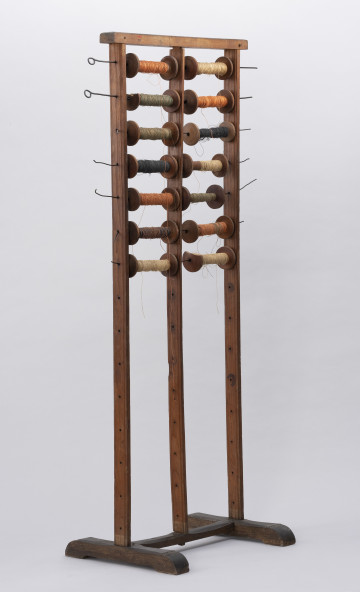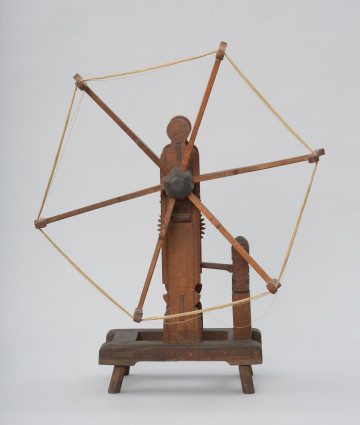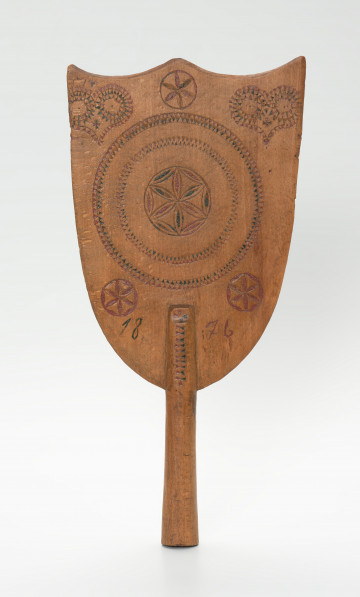
Bobbin rack
1801 — 1939
National Museum in Szczecin
Part of the collection: Material culture of West Pomerania
Flax and hemp served as staple resources in the production of many everyday items for the rural population of the past. Clothes and bedding were sewn from flax, while hemp was used to make ropes and sacks. However, the process of their manufacture from the moment of sowing to the final products was long and labour-intensive. Once the plants had been harvested, they were dried, and then hemp was beaten with a paddle to separate the seed bags from the straw. The next stage was soaking, which lasted until the fibre began to detach from the stalks. After soaking, the stalks were dried in the sun or over a fire and then threshed, i.e. braked, separating the wooden parts (shives) from the fibres, using a "one-blade flax break" (a wooden tool used to soften flax and hemp) and "double-blade flax break" (a wooden tool for refining flax fibres) one-blade and double-blade flax breaks. These tools were operated on the principle of a scissor mechanism and were very similar to each other. The common difference was that a one-blade flax break had a single blade and a double-blade flax break a double one. Ethnographer Kazimierz Moszynski notes that in some regions the one-blade flax break was used only for processing hemp, while the double-blade one was used for both hemp and flax. Flax was exclusively threshed on a double-blade flax break, while hemp was first broken on the one-blade flax break and then threshed on a double-blade flax break. One of the proverbs, explaining the meaning of the Polish word for October, refers to the work done with the help of double-blade flax break: “Październik, bo paździerze baba z lnu cierlicą bierze.” which loosely translates into: October takes its name from a woman who uses a double-blade flax break to get shives. Shives and October are linguistically very similar in Polish. Both the proverb and the name of the month emphasize the importance of textile manufacture in the rural areas of Poland. Even when the textile industry embraced intensive industrialisation, flax and hemp fibres were continued to be made by hand on farmsteads extending beyond Western Pomerania, using machines such as the featured threshing machine (double-blade flax break). The item dates back to the 19th century and is decorated with a hand-painted heart motif. Alongside flowers (especially tulips), rosettes and other geometric patterns such as circles or dots, the heart motif often appeared on furniture and other everyday articles found in the rooms of Pomeranian households. Decorating furnishings was not only an expression of the aesthetic sense of the Pomeranians of the past, it also had symbolic significance. The heart adorning the double-blade flax break is not only attributed to love, but is also considered to harbour happiness and human intelligence. Agnieszka Słowińska
Author / creator
Object type
flax breaker, tool
Technique
carpentry techniques, painting
Material
wood, paint
Origin / acquisition method
acquisition
Creation time / dating
Creation / finding place
Owner
Muzeum Narodowe w Szczecinie
Identification number
Location / status

1801 — 1939
National Museum in Szczecin

1701 — 1900
National Museum in Szczecin

1876
National Museum in Szczecin
DISCOVER this TOPIC
National Museum in Lublin
DISCOVER this PATH
Educational path